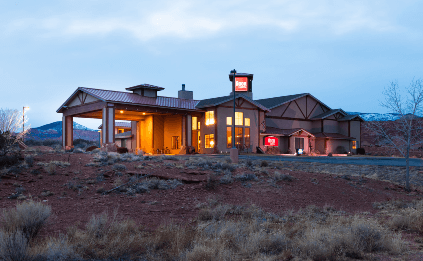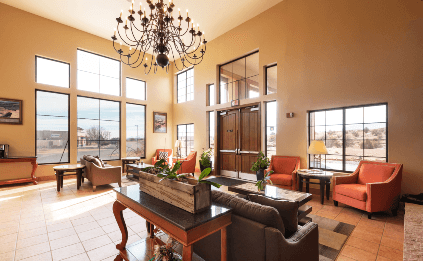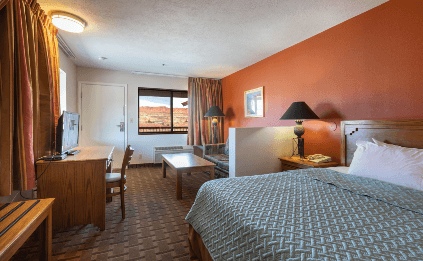The Traveler's Guide to Capitol Reef National Park, Utah
Welcome to the UtahRooms Traveler’s Guide to Capitol Reef National Park. Nestled in a laid-back picturesque corner of southern Utah, Capitol Reef remains undiscovered by many, while its renowned neighbors, Bryce Canyon and Zion, are more well known. In this guide, we’ll unveil the wonders of Capitol Reef, a place where nature’s spectacle and history converge to offer an unforgettable experience.
Discovering Capitol Reef
When travelers stumble upon this park, they are often astounded by its hidden beauty. Capitol Reef is not just another desert landscape; it’s a realm of breathtaking southern Utah scenery adorned with intriguing rock formations.
This park possesses a unique character that sets it apart, an extraordinary landscape where nature’s wonders and historical legacies converge. Whether you seek outdoor thrills, tranquil landscapes, or geological marvels, Capitol Reef offers an unparalleled experience. Venture off the beaten path and unravel the treasures of this hidden gem in southern Utah.
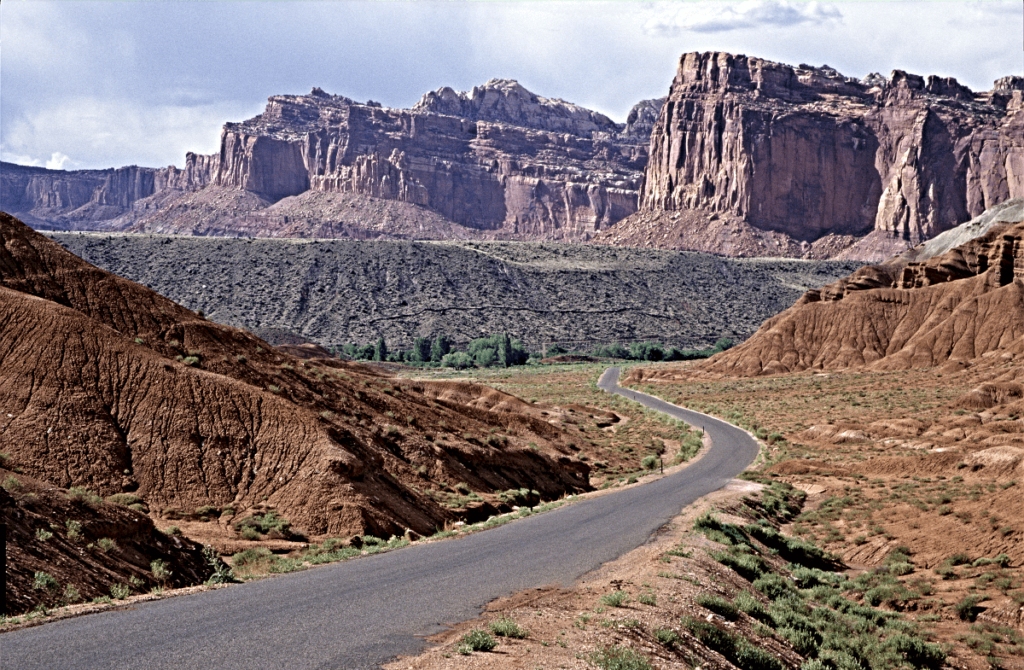
Where to Stay in Capitol Reef: The Noor Hotel
What Makes Capitol Reef So Unique?
1. Extraordinary Rock Formations
Witness the whimsically named Hamburger Rocks perched atop a white sandstone table, the towering rust-red Chimney Rock, the silent and enigmatic Temple of the Moon, and the majestic Castle. The canyon walls here display a dazzling array of colors, earning it the nickname “the Land of the Sleeping Rainbow” by the Navajo people.
2. Diverse Ecosystems and Activities
Capitol Reef’s varied geologic strata, elevations, and water sources give rise to diverse ecosystems and a plethora of activities. Explore hiking trails that meander through breathtaking terrain, conquer mountain-biking paths, or embark on thrilling four-wheel-drive adventures. Marvel at the vibrant desert wildflowers and the verdant forests. Keep a keen eye out for an abundance of songbirds and wildlife, ranging from lizards and snakes to the elusive ringtail cat, a member of the raccoon family. As you traverse the park, you’ll uncover thousand-year-old petroglyphs and traces of its rich history, from the Ute and Southern Paiute tribes to Wild West outlaws and industrious Mormon pioneers.
3. A Tapestry of History
Delve into the park’s rich historical tapestry at the one-room Fruita Schoolhouse, where pioneer children once learned the three Rs and delved into the Bible and Book of Mormon. The name “Capitol Reef” may evoke images of a tropical shoreline, but it aptly symbolizes the pioneering spirit of former seafarers who extended the meaning of “reef” to include these formidable rock barriers. The massive round white sandstone domes, resembling capitol buildings, led to the park’s unique name.
4. A Verdant Oasis Amidst Desert
Unlike its neighboring desert landscapes, Capitol Reef boasts a lush oasis, nurtured by the meandering Fremont River. Stroll along its banks, shaded by cottonwoods and willows, and discover nature’s resilience. In the 19th century, pioneers recognized the land’s inviting nature and fertile soil, establishing the charming community of Fruita. Their orchards, preserved by the Park Service, stand as a testament to the past.
5. The Remarkable Waterpocket Fold
Also known as the Big Fold, this site was formed approximately 60 million years ago, when the earth’s crust uplifted, forming the Rocky Mountains and the Colorado Plateau, a remarkable natural quirk unfolded. The crust crinkled into an extensive fold known as the Waterpocket Fold, spanning nearly 100 miles, with almost its entire length ensconced within the national park. Explore this geological wonder and uncover the ancient history etched into the stone.
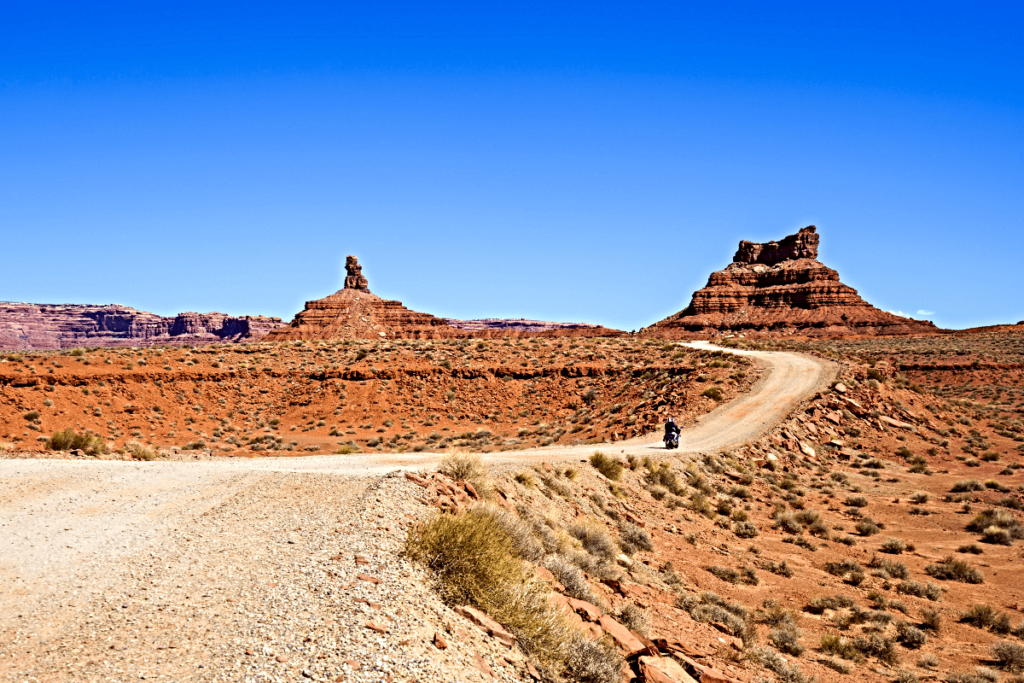
Outdoor Pursuits
Capitol Reef National Park, among the last frontiers explored in the continental United States, remains a hidden gem, offering a rugged, unspoiled landscape. Local companies provide guided services within the park and its vicinity, ensuring you make the most of your visit.
Local companies offer multi-day horseback trail rides, half- and full-day hiking, four-wheel-drive tours, photography-focused expeditions, and shuttle services for hikers and mountain bikers. Also available are guided trips for hiking, canyoneering, biking, fishing, horseback riding, and four-wheel-drive excursions. ATV use is not permitted within the park.
Exploring Capitol Reef National Park by Car
While it’s possible to spend several days hiking the park’s trails, you can also enjoy the park’s beauty and highlights from the comfort of your car.
Start your journey at the Capitol Reef Visitor Center, where you can watch a short slideshow explaining the park’s geology and early history. Take the paved 25-mile round-trip Scenic Drive that leads south into the park from the visitor center. Along the way, you’ll enjoy striking views of dramatic canyons and rock formations.
You can also drive down the gravel Capitol Gorge Road (5 miles round-trip) at the end of the Scenic Drive. This route provides a glimpse of some of the park’s finest backcountry scenery. For a short walk, consider the relatively flat 2-mile round-trip Capitol Gorge Trail, starting at the end of Capitol Gorge Road, leading to the historic Pioneer Register—a rock wall where pioneers left their mark.
Explore the Grand Wash Road, a maintained dirt road that offers access to spectacular backcountry areas. Along this 2-mile round-trip route, you’ll find Cassidy Arch, where the infamous outlaw Butch Cassidy is rumored to have taken refuge.
The Utah 24 highway, crossing Capitol Reef from east to west, provides access to various viewpoints showcasing the park’s features, including the monumental Capitol Dome, the aptly named Castle formation, the historic Fruita Schoolhouse, and roadside petroglyphs left by the prehistoric Fremont people.
Four-Wheel Touring & Mountain Biking
While bikes and four-wheel-drive vehicles are confined to established roads in most national parks, Capitol Reef offers several challenging routes suitable for 4x4s and mountain bikes. Remember to check current road conditions with park rangers, especially after rain, as conditions can become impassable.
Scenic Drive: The 25-mile round-trip Scenic Drive is the sole route suitable for road bikes. It provides breathtaking views of cliffs, monoliths, and rock formations.
Grand Wash and Capitol Gorge Roads: These routes are open to mountain bikes and four-wheel-drive vehicles. Rain can affect road conditions, so check with park rangers before venturing out.
Cathedral Valley Loop: Recommended for mountain bikers and four-wheel-drivers, this 60-mile route includes varied surfaces like dirt, sand, and rock. It entails fording the Fremont River (usually 1 to 1 1/2 feet deep) and rewards you with unspoiled scenery, sandstone monoliths, and majestic cliffs.
Guided Tours
Both Hondoo Rivers and Trails and Backcountry Outfitters offer full-day four-wheel-drive tours into the national park and surrounding areas. Early-morning options are available for photographers keen on capturing sunrise lighting. Specialized tours, including visits to rock art sites, can be arranged.
Hiking
Capitol Reef’s hiking trails offer panoramic views of colorful cliffs, desolate canyons, and lush oases along the Fremont River. Keep an eye out for petroglyphs and traces of the park’s early inhabitants.
Park rangers can assist in selecting trails suitable for the season, weather, and your physical condition. Serious backpackers should consider purchasing topographic maps available at the visitor center. In the summer, protect yourself from the sun with hats, sunscreen, and carry at least a gallon of water per person.
Capitol Gorge Trail: A 2.5-mile roundtrip hike in a narrow canyon. It’s relatively easy, starting at the end of the dirt Capitol Gorge Road, passing the Pioneer Register with signatures dating back to 1871.
Sunset Point Trail: A short but rewarding hike, best enjoyed at sunset, offering panoramic views of dramatic cliffs and domes. Access it at Panorama Point turnoff on Utah 24.
Cassidy Arch Trail: A more strenuous 3.5-mile round-trip hike that climbs steeply from the Grand Wash floor to high cliffs overlooking the park. You’ll encounter Cassidy Arch, named after the infamous outlaw Butch Cassidy.
Capitol Reef also offers backpacking opportunities, including the 15-mile round-trip Upper Muley Twist Canyon route and the 22-mile round-trip Halls Creek Narrows. These require free backcountry permits, available at the visitor center. Discuss your plans with park rangers due to the risk of flash floods in these areas.
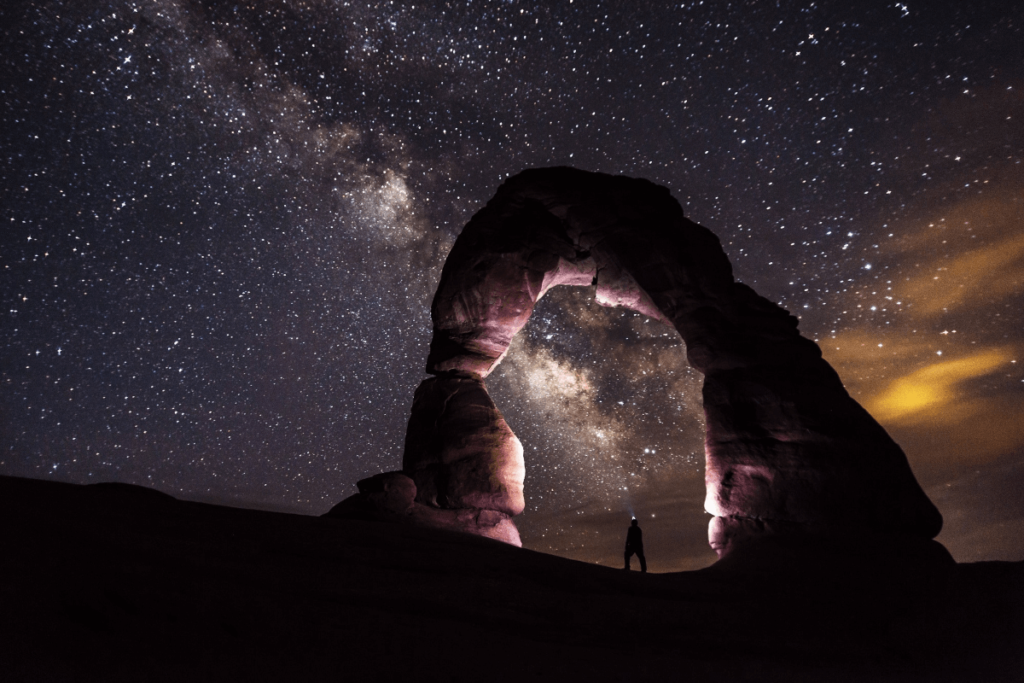
Horseback Riding
Some areas of the park allow horseback riding, while others prohibit it. Check with the visitor center for details. Hondoo Rivers and Trails offers multi-day guided trail rides that include the national park or other areas, with rates around $1,500 per person for a 6-day trip, including all essentials. Backcountry Outfitters also provides multi-day trail rides and shorter options for kids and adults.
Wildlife-Watching
Summer, despite the heat and potential thunderstorms, is a prime season for wildlife viewing. Look out for various lizard species, deer, chipmunks, antelope ground squirrels, golden eagles, Cooper’s hawks, ravens, songbirds, ringtail cats, bobcats, cougars, foxes, marmots, and coyotes.
Camping In the Park
Fruita Campground: This 71-site campground offers a forested camping experience with spacious sites, wildlife sightings, modern restrooms, drinking water, picnic tables, fire grills, and an RV dump station (summer only). Open year-round, camping costs $10, and reservations are not accepted.
Primitive Campgrounds: The park has two primitive campgrounds, free and open year-round on a first-come, first-served basis. Both provide tables, fire grills, and pit toilets but no water. Check road conditions before heading out, as unpaved roads may be impassable during wet weather.
Cedar Mesa Campground: Located in the southern part of the park, approximately 23 miles down Notom-Bullfrog Road.
Cathedral Valley Campground: Found in the northern part of the park, accessible via Hartnet Road.
Backcountry camping is permitted in most of the park with a free permit available at the visitor center, but fires are strictly forbidden in the backcountry.
Ranger Programs
Capitol Reef National Park offers a range of engaging ranger-led programs and activities throughout the spring, summer, and fall seasons. These programs are designed to enhance your understanding and appreciation of the park’s natural and cultural heritage.
Campfire Programs: Most evenings, you can enjoy campfire programs held at the outdoor amphitheater next to Fruita Campground. Topics vary and may cover subjects such as animals, plants, geology, and the area’s human history.
Guided Hikes and Walks: Rangers lead guided hikes and walks, providing valuable insights into the park’s unique features.
Talks on History: Learn about the rich history of the area with short talks at the pioneer Fruita Schoolhouse. Schedules for these programs are posted on bulletin boards at both the visitor center and campground.
Junior Ranger and Junior Geologist Programs: Kids can participate in these educational programs, where they’ll have the opportunity to engage in activities like mapping ancient earthquakes and inspecting water bugs. Details about these programs can be obtained at the visitor center.
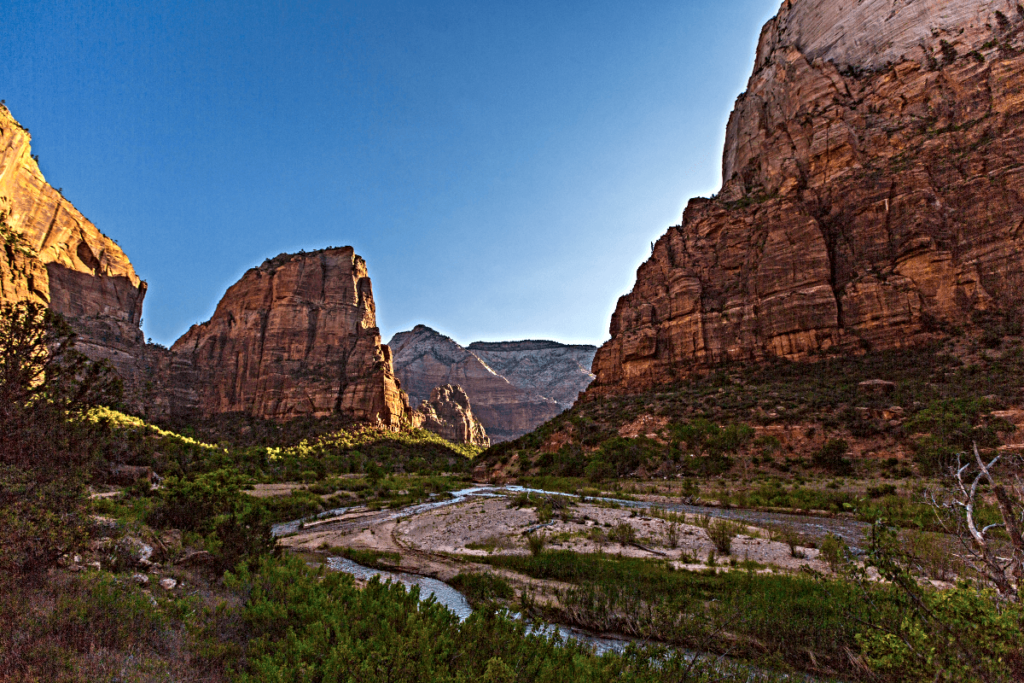
Where to Stay in Capitol Reef: The Noor Hotel
Petroglyphs to Pioneers: Capitol Reef’s Historic Sites
Throughout the park, you’ll encounter evidence of human presence spanning centuries:
Fremont People: Dating back to as early as A.D. 700, the Fremont people inhabited the area along the river. They were primarily hunters and gatherers who also cultivated corn, beans, and squash. Petroglyphs and pictographs created by the Fremont people can still be seen on canyon walls, providing glimpses into their lives and mysteries yet to be unraveled by historians and archaeologists.
Pioneer Register: In the late 1800s, prospectors and travelers passed through the Capitol Gorge section of the park, leaving their names on a rock wall known as the Pioneer Register. This historical site can be reached via a 2-mile loop.
Fruita: Mormon pioneers established the Fruita community after realizing the area’s suitability for fruit cultivation. The 1896 Fruita Schoolhouse, now carefully restored by the National Park Service, stands as a testament to this heritage. It served various functions, including as a church, social hall, and schoolhouse. Visitors can explore its authentically furnished interiors.
Gifford Farmhouse: Located about a mile south of the visitor center, the historic Gifford Farmhouse, built in 1908, represents an early-20th-century Utah farmhouse. It’s open daily from mid-April through September, featuring period objects and demonstrations of early homemaking skills and crafts like quilting and rug making.
Discover the captivating history and heritage of Capitol Reef as you explore these fascinating historic sites within the park.
Getting to Capitol Reef National Park
Capitol Reef National Park is strategically located in Utah, offering convenient access for travelers. It sits 120 miles northeast of Bryce Canyon National Park, 204 miles northeast of Zion National Park, 224 miles south of Salt Lake City, and 366 miles northeast of Las Vegas, Nevada. You can reach the park via Utah 24, which connects to I-70 in both the northeast and northwest directions.
Traveling from Bryce Canyon National Park
If you’re arriving from Bryce Canyon National Park, follow Utah 12 northeast until it intersects with Utah 24. Continue eastward on Utah 24, and you’ll arrive at Capitol Reef.
Coming from Glen Canyon National Recreation Area and the Four Corners region:
Travelers approaching from Glen Canyon National Recreation Area and the Four Corners region should take Utah 276 and/or Utah 95 north to reach the intersection with Utah 24. From there, head west into the park.
Air Travel
The closest major airport is Grand Junction Regional Airport, situated about 200 miles east in Grand Junction, Colorado. This airport offers direct flights or convenient connections from most major cities, including Allegiant, American/American Eagle, Continental, Delta, United, and US Airways.
Visitor Information and Services
For comprehensive information in advance of your visit, it’s advisable to contact Capitol Reef National Park. The visitor center is conveniently located on the park access road, where it meets Utah 24. A scenic path runs alongside the access road, connecting the visitor center with the campground. Along this path, you’ll encounter the historic Fruita blacksmith shop, picturesque orchards, and a charming shaded picnic area.
The visitor center operates daily during the summer season, from 8 am to 6 pm (with shorter hours during other times). Inside, you’ll find informative exhibits on the park’s geology and history, along with a captivating 10-minute introductory slide show about the park. Rangers are on hand to answer your questions, issue backcountry permits, provide free brochures, and offer a selection of books, maps, videos, postcards, and posters. The Ripple Rock Nature Center, located approximately 3⁄4 mile south of the visitor center along the Scenic Drive, offers engaging exhibits and activities designed especially for children. Please note that it’s open from Memorial Day weekend through Labor Day weekend, so check with the visitor center for its current operating hours.
Fees, Regulations, and Backcountry Permits
Entry to the park is free.
There is a fee per vehicle (including motorcycles) or per person on foot or bicycle to access the scenic drive beyond the main campground.
Free backcountry permits are required for all overnight hikes and can be obtained at the visitor center.
Bicycles are prohibited in the backcountry and on all hiking trails.
To maintain the park’s natural harmony, feeding or disturbing wildlife, as well as vandalizing or disrupting any natural, cultural, or historic feature, is strictly forbidden.
To ensure the safety of both visitors and wildlife, campers should be cautious about food storage and promptly dispose of garbage.
Keep dogs on a leash at all times, and note that they are prohibited on all trails, more than 100 feet from any road, and in public buildings.

